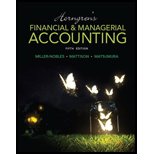
Concept explainers
(1)
To open: T-account for each account of G Architects using unadjusted balances.
(2) (a)
Adjusting entries are those entries which are made at the end of the accounting period, to record the revenues in the period of which they have been earned and to record the expenses in the period of which have been incurred, as well as to update all the balances of assets and liabilities accounts on the
Accounting rules for journal entries:
- To record increase balance of account: Debit assets, expenses, losses and credit liabilities, capital, revenue and gains.
- To record decrease balance of account: Credit assets, expenses, losses and debit liabilities, capital, revenue and gains.
To Prepare: adjusting entries to record the accrued service revenue on March 31.
(b)
To Prepare: Adjusting entries to record the unearned service revenue earned for which collection was made in advance.
(c)
To Prepare: Adjusting entries to record the supplies expense on March 31.
(d)
To Prepare: Adjusting entries to record the salaries owed to employees.
(e)
To Prepare: Adjusting entries to record the expired amount of one month prepaid rent.
(f)
To Prepare: Adjusting entries to record the
(3)
To post: The above adjusting entries to the T-account.
Want to see the full answer?
Check out a sample textbook solution
Chapter 3 Solutions
Horngren's Financial & Managerial Accounting (5th Edition)
- 5 PTSarrow_forwardWhat is the total return for last year on these financial accounting question?arrow_forwardA boiler maintenance team services a design capacity of 8 boilers per day with an effective capacity of 8 boilers per day. What is the team's utilization if it repairs an average of 5 boilers per day?solve thisarrow_forward
- Accounting 45arrow_forwardBrandi Manufacturing estimates manufacturing overhead of $3,500,000 for 2024 and will apply overhead to units produced based on 800,000 machine hours. During 2024, Brandi used $1,850,000 of raw materials, paid $5,210,000 in direct labor, generated 790,000 machine hours, and produced 2,500,000 units. Required: Calculate Brandi's predetermined overhead rate and cost per unit of production for 2024.arrow_forwardnonearrow_forward
- Principles of Accounting Volume 1AccountingISBN:9781947172685Author:OpenStaxPublisher:OpenStax College
 College Accounting (Book Only): A Career ApproachAccountingISBN:9781337280570Author:Scott, Cathy J.Publisher:South-Western College Pub
College Accounting (Book Only): A Career ApproachAccountingISBN:9781337280570Author:Scott, Cathy J.Publisher:South-Western College Pub - Century 21 Accounting Multicolumn JournalAccountingISBN:9781337679503Author:GilbertsonPublisher:Cengage
 Financial AccountingAccountingISBN:9781337272124Author:Carl Warren, James M. Reeve, Jonathan DuchacPublisher:Cengage Learning
Financial AccountingAccountingISBN:9781337272124Author:Carl Warren, James M. Reeve, Jonathan DuchacPublisher:Cengage Learning College Accounting (Book Only): A Career ApproachAccountingISBN:9781305084087Author:Cathy J. ScottPublisher:Cengage Learning
College Accounting (Book Only): A Career ApproachAccountingISBN:9781305084087Author:Cathy J. ScottPublisher:Cengage Learning





